Saying “thank you” is powerful. It’s one of the most commonly spoken phrases across cultures because showing gratitude is good manners, no matter where you go. Even if you’re not fluent, being able to say thank you in different languages can go a long way to demonstrating respect and helping you connect with local communities.
At Remitly, we’re all about helping people get settled anywhere in the world. So in this article, we’ll explore the deeper meaning of gratitude and look at how to say thank you globally. Sometimes, this simple phrase is all you need to make a good impression.
Why a simple “thank you” goes a long way
Thanking someone when they do something for you is a tradition in lots of places—but it goes deeper than that.
Studies show that we often underestimate just how good it makes people feel when we express gratitude. And when we take the time to do so in their own language, it’s even more meaningful. As psychologist Stephen Murphy-Shigematsu writes, “A little appreciation goes a long way in bringing people together, crossing borders that divide humans into “us” and “them”.
When you show gratitude in a foreign language, locals are more likely to embrace and welcome you. It’s one of the most powerful ways to break cultural barriers and communicate effectively.
How do you say thank you in different languages?
English
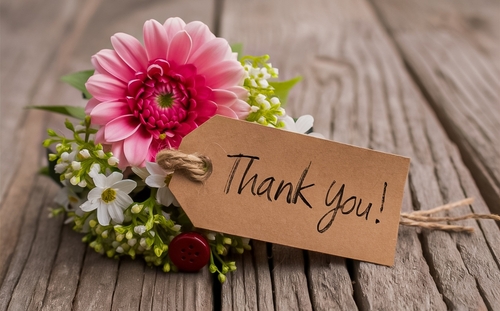
These days, English is considered an international language as it dominates global business and communication, like on online media platforms. So, the English words “thank you” are instantly recognized worldwide as a standard expression of gratitude.
There are lots of variations on this phrase.
- “Thanks” is the most common, as it’s shorter and a little less formal.
- You may also hear “cheers” in places like the UK, although I’ve often heard it used in Canada.
- You may also hear phrases like “I appreciate it” or “I owe you one”.
These more casual terms are frequently used in everyday interactions between strangers and close friends. But if in doubt, a simple “thank you” is acceptable when you need to let someone know you appreciate their help.
Spanish
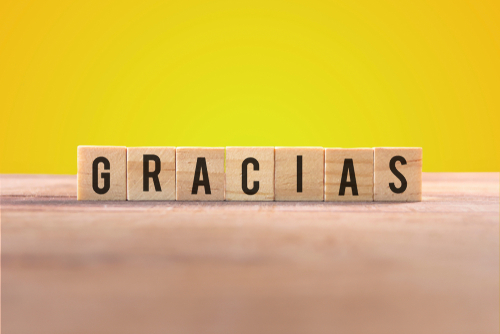
Spanish is a true world language, spoken by over 500 million people around the world. This means “gracias”, the Spanish word for thank you, is quite well-known even outside Spanish-speaking countries.
It’s short, easy to remember, and suitable for nearly every situation. Remember, in Latin America, the ‘c’ in “gracias” is pronounced like an ‘s’, while in much of Spain, it’s more like a ‘th’ sound.
Of course, Spanish also has some variations on the word, too:
- “Muchas gracias” means “thank you very much”.
- “Mil gracias” means “a thousand thanks”, allowing you to convey even deeper appreciation.
Remember, hospitality and personal connections are highly valued in Spanish culture. Whether someone is serving you a meal, helping with directions, or welcoming you into their home, a sincere “gracias” is an excellent way of reflecting that emphasis on warmth and respect.
French
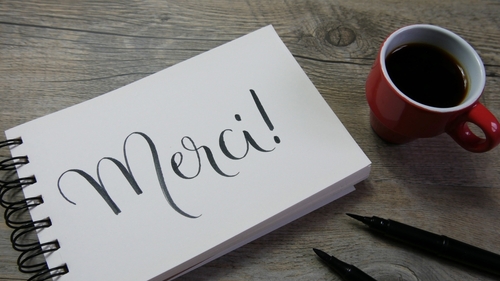
French is spoken on multiple continents around the world. It’s also one of the most popular languages for immigrants to learn after their native language. In fact, you’ve probably already heard the French term for thank you—”merci”.
This word is appropriate for most situations, whether you’re receiving service at a store or recognizing a friend for buying your meal. But there are alternatives,
- If you want to express a deeper level of gratitude, use “merci beaucoup”, which means “thanks a lot” or “thank you very much”.
- There’s “merci pour tout”, or thanks for everything.
- The more proper “je vous remercie” literally translates to “I thank you”. It’s generally only used in professional or formal contexts.
On the other end of the scale, you may hear native French speakers, especially younger ones, say “cimer”. This is a good example of the French slang verlan, which is based on inverting words. But because it’s so informal, this is the kind of phrase you’d only use with close friends who speak the same way.
Manners and etiquette are highly prized in France, so use “merci” a lot, both with strangers and people you know. Just like greeting everyone with ‘bonjour’, it’s a way to show respect and appreciation for the nuances of French culture.
Japanese
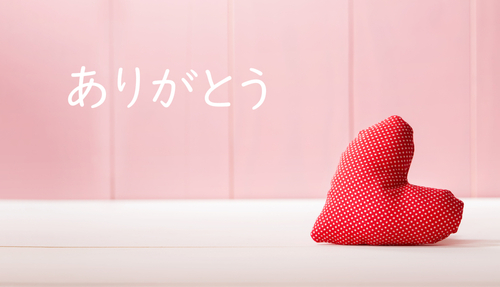
Japan has one of the most etiquette-focused cultures in the world. How you behave in public and talk to others is hugely important, and knowing how to say thanks is a big part of it.
- “Arigatō” (ありがとう) is the more casual way to show gratitude, and it’s something you’d say to your friends or peers.
- If you are speaking to a stranger, especially someone older or in a position of authority, you would say “arigatō gozaimasu” (ありがとうございます), which is more respectful.
- “Dōmo arigatō gozaimasu” (どうもありがとうございます) is a polite way of saying “thank you very much”.
Respect is a huge part of Japanese culture, and using the right word is one way to show it. If in doubt, go with the more formal arigato gozaimasu, as people will generally not be offended by being shown too much respect.
Mandarin Chinese
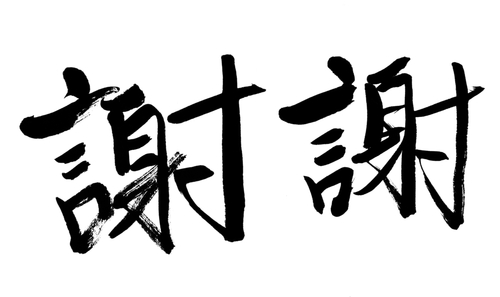
In Mandarin, “xièxiè” (谢谢)—pronounced shieh-shieh—is the most common way of saying “thanks”. Use this when getting assistance in the store or among friends and family.
You might also hear “xièxiè nǐ” (谢谢你), or the more formal “xièxiè nín” (谢谢您), used when addressing an authority figure or an elder.
Swahili
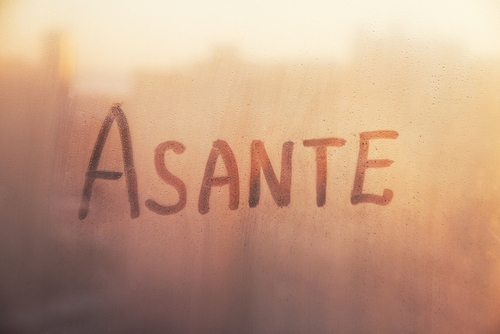
Swahili is widely spoken across East Africa, and being able to say thank you can get you a warm reception there. “Asante” is the most common phrase, but you could also say “asante sana”, meaning thank you very much.
Generosity and hospitality are seen as big virtues in Swahili-speaking culture, and showing gratitude is an important way to connect to this tradition.
Unique phrases and cultural nuances
Saying thank you is essential in almost every culture, but the way you do it varies a lot from one language to another.
- For example, in Zulu, you can say “ngiyabonga”, which literally translates to “I see you”.
- In Vietnamese, you say “Cám ơn”, which means something like “feel favor”.
- Meanwhile, “mahalo” is the Hawaiian word for thanks, but it also expresses a deeper sense of respect and connection to both community and nature.
- In Maori culture in New Zealand, “kia ora” means “be well” and is used to express thanks.
Of course, gratitude isn’t just about the words you use. For example, in Japan, a bow can communicate your gratitude, and the depth and duration of the bow indicate your level of feeling.
Meanwhile, in many places in Southeast Asia, placing your hands together in a prayer position can also express appreciation.
What does saying “thank you” really mean across cultures?
No matter how you say thank you, it’s important to remember that it isn’t just a word. In many ways, expressing thanks is a reflection of a particular culture’s values and worldview.
In Western countries, gratitude is expressed openly and often enthusiastically, reinforcing values of friendliness and individual appreciation. But in Asian cultures, appreciation is communicated more indirectly or discreetly, mirroring the emphasis placed on humility and harmony.
In short, how people say thank you tells you something about what they value as a culture. And being able to understand it shows your respect and appreciation of the place you’re visiting.
How understanding gratitude can enrich your experiences
Gratitude across cultures is about more than just manners. Learning how to say thank you in different languages can make a huge difference when you’re moving or traveling abroad.
- It fosters more positive interactions.
- Leads to deeper connections with locals.
- Allows you to be more aware of your surroundings.
- Makes you more present and appreciative of new cultures, cuisines, and the natural beauty around you
- Creates more meaningful memories.
Whether you’re moving to a new country or traveling for shorter stays, knowing some key phrases in the local language will make your experience much more meaningful.
Saying ‘thank you’ around the world
There’s a reason there are so many different ways to say thank you. Whatever words you use, it’s a universal way of building trust, expressing respect, and connecting across cultures. Learning a few different ways to say thank you will enrich your travel experience and show openness to the people and cultures you encounter.
Why not challenge yourself this week to say thank you in one new language? You can practice them aloud and consult YouTube videos or other resources to get your pronunciation right. You could even write them down on a small card or your phone to keep them handy whenever you’re in need.
Gratitude is a small gesture that can have a huge impact. Master the art of saying thank you, and you will be guaranteed a warm welcome anywhere you go.
What are the Best Practices for Expressing Gratitude in Different Cultures?
Expressing gratitude varies widely around the world, influenced by diverse greeting customs and etiquette across cultures. In some regions, a simple “thank you” suffices, while others expect elaborate gestures, like handshakes or gifts. Understanding these nuances fosters respect and strengthens connections, enhancing personal and professional relationships globally.
How Can Understanding Cultural Expressions of Gratitude Enhance Celebrations Like Mother’s Day in Guatemala?
Understanding cultural expressions of gratitude enriches celebrations like Mother’s Day in Guatemala. By honoring traditions, such as giving flowers and preparing special meals, families deepen their connections and express appreciation. This vibrant approach transforms guatemala mother’s celebration into a heartfelt gathering, fostering unity and reinforcing bonds across generations.
FAQs
How many ways can you say “thank you” in different languages?
You can express gratitude in over 7,000 dialects globally, but this article only highlights key phrases in some of the most widely spoken and culturally significant languages.
Why is it important to learn how to say “thank you” in another language?
Learning how to say thank you in different languages is a fantastic way to show respect and enhance your travel and cultural experiences. It shows respect and creates deeper connections with locals. You’ll often find you have a much warmer welcome in a foreign place.
What is the easiest way to remember foreign thank-you phrases?
You can create flashcards to keep in your pocket or on your phone and practice gratitude phrases before a trip. You can also link the words with an experience, such as being served a meal.
Are there languages that don’t have a word for “thank you”?
Some languages prize gestures over verbal expressions of gratitude. For example, in traditional Thai, people generally made a “wai”, a prayer-like gesture with a bowed head, instead of saying thank you verbally. Likewise, Lakota has no word that directly translates into thank you, and gratitude is usually shown through actions instead.